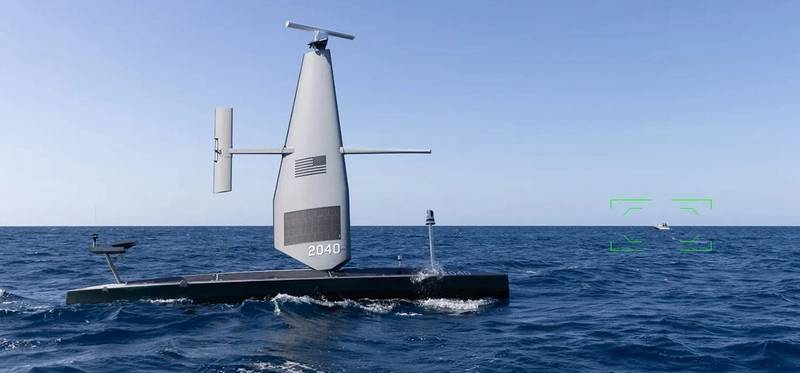Saildrone is scaling up its fleet in the Caribbean and Eastern Pacific to stem the flow of illegal drugs into the United States in response to the US-declared state of emergency at its southern border.
On the water, the US Navy and Coast Guard have moved fleets of ships into place. These agencies are responsible for securing thousands of miles of coastline and open ocean, but assets are extremely limited, and there is too much water to cover.
Now, Saildrone is doubling its fleet of unmanned surface vehicles (USVs) in the Caribbean and the Pacific Ocean in support of Operation Southern Spear to detect and stem the flow of illegal drugs traveling through known maritime corridors into the US.
A record number of 20 high-endurance Saildrone Voyager USVs equipped with a newly upgraded sensor suite will monitor illegal activity along the southern maritime approaches, operating in support of Joint Interagency Task Force South (JIATF-S) and US Naval Forces Southern Command/US Navy Fourth Fleet (NAVSOUTH/FOURTHFLT).
Two Saildrone Voyager USVs are also deployed to the Caribbean Sea in support of Operation Southern Spear.
The Saildrone Voyager is a 10-meter USV designed to support distributed maritime operations by monitoring critical areas, such as chokepoints, for illicit activity. Equipped with advanced sensors, radar and communication systems, Saildrone USVs can detect suspicious vessels, track their movements and relay near real-time intelligence into a common operating picture for action.
Once a target is identified, Saildrone provides precise coordinates and other data, enabling the Coast Guard to interdict bad actors before they reach US waters or deliver their illicit cargo.
Saildrone USVs have proven capable of operating for months at a time, providing persistent blue water maritime domain awareness without the need for crew rotations or refueling stops. This allows navies and law enforcement to extend their operational reach without the need to commit additional personnel or resources to routine patrols.
According to US Naval Forces Southern Command/US Navy Fourth Fleet director of innovation, Cmdr. Jon Williams, “Operation Southern Spear will advance the Navy’s Hybrid Fleet Campaign and Project 33 target to operationalize robotic and autonomous systems. Long-dwell unmanned surface vehicles that provide valuable intelligence, reconnaissance and surveillance are a valuable asset in maritime domain awareness.”
Operation Southern Spear is an evolution and expansion of Operation Windward Stack, which was operated by the US Navy’s 4th Fleet in the Caribbean throughout 2024. During Windward Stack, operators and watchstanders in 4th Fleet used Saildrone data to increase their maritime domain awareness in critical choke points, traditionally used for trafficking people and narcotics in the Caribbean.
The 1.5-year mission showed that Saildrone USVs operate at a small fraction of the cost of a Coast Guard or Navy ship, allowing large-scale deployments of many ocean drones to patrol an AOR, closing the gaps in surveillance coverage the cartels have capitalized on repeatedly.
JIATF-S is a multi-agency, multi-service Department of Defense task force made up of Navy, Coast Guard, and CBP, as well as other US government agencies and 20 partner countries. Its mission is to counter narcotics operations, maritime security and transnational organized crime in the Caribbean, Central and South America.

